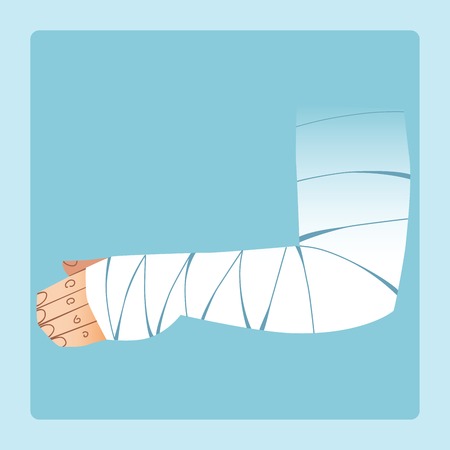Introduction to Taping in Rehabilitation
Taping has become an increasingly common feature within musculoskeletal rehabilitation settings across the UK, providing both patients and clinicians with a versatile tool for managing pain, supporting injured tissues, and enhancing movement. The use of taping techniques—ranging from traditional rigid sports tape to more modern elastic kinesiology tape—has gained widespread popularity among physiotherapists, sports therapists, and rehabilitation specialists. This surge in interest is not without reason: taping offers a non-invasive approach that can complement conventional therapies and empower individuals on their recovery journey. As more people seek effective, evidence-based strategies to address musculoskeletal issues, understanding the science behind taping and its practical applications is becoming essential for both healthcare providers and patients alike.
2. Types of Taping Methods
Within musculoskeletal rehabilitation, taping is a widely utilised technique in the UK for supporting joints, reducing pain, and enhancing movement. Clinicians commonly employ two primary types: kinesiology taping and rigid (sports) taping. Understanding these methods—and their differences—can help patients make informed choices about their care.
Kinesiology Taping
Kinesiology tape is an elastic therapeutic tape designed to mimic the skin’s elasticity. It allows for full range of motion while providing support. In UK physiotherapy and sports injury clinics, it is frequently used to facilitate lymphatic drainage, reduce swelling, and aid muscle activation or relaxation. Patients often notice improved proprioception (awareness of body position), which can assist recovery following sprains or strains.
Rigid (Sports) Taping
Rigid tape, sometimes called zinc oxide or sports tape in the UK, offers firm support to injured ligaments and joints. Unlike kinesiology tape, it does not stretch, making it ideal for stabilising acute injuries such as ankle sprains. Rigid taping is also favoured in contact sports settings, where protection from re-injury during play is paramount.
Comparison of Taping Methods Used in UK Clinics
| Taping Method | Main Features | Common Uses | UK Clinical Application |
|---|---|---|---|
| Kinesiology Tape | Elastic, allows movement, breathable | Muscle facilitation/inhibition, swelling reduction, proprioceptive feedback | Rehabilitation post-injury, chronic pain management, movement retraining |
| Rigid Sports Tape | Non-elastic, strong support | Joint stabilisation, ligament protection, injury prevention | Acute injury management, pre-match taping in football/rugby |
Cultural Considerations in the UK Context
In British practice, physiotherapists often tailor taping techniques to individual patient needs and sporting requirements. While rigid taping remains a staple for match-day preparation in rugby and football clubs across the UK, kinesiology taping has gained popularity among amateur athletes and those seeking non-restrictive rehabilitation options. Patients are encouraged to discuss their goals and preferences with their clinician to determine the most appropriate approach for optimal recovery.

3. The Physiological Mechanisms Behind Taping
Taping is not simply a matter of sticking adhesive strips onto the skin; it involves a range of physiological mechanisms that can positively influence musculoskeletal rehabilitation. Current scientific research highlights three main areas where taping exerts its effects: muscle activation, joint stabilisation, and proprioception enhancement.
Muscle Activation: When applied correctly, taping can stimulate underlying muscles by gently lifting the skin. This subtle lift increases blood flow and lymphatic drainage, which may help reduce swelling and promote healing in injured tissues. Moreover, the sensory feedback provided by the tape encourages proper muscle engagement and can prevent compensatory movements that might otherwise hinder recovery. Studies have suggested that this enhanced neuromuscular activation supports more efficient muscle recruitment during movement, facilitating rehabilitation and functional improvements.
Joint Stabilisation: Taping offers external support to joints without significantly restricting range of motion. This is particularly beneficial for individuals recovering from sprains, strains, or instability issues. By providing gentle yet consistent support, tape helps maintain proper alignment during activity and reduces the risk of further injury. It acts as a reminder for the body to move within safe limits while still allowing sufficient mobility for daily activities or therapeutic exercises. In clinical settings across the UK, practitioners frequently use taping to aid patients in regaining confidence and stability during their rehabilitation journey.
Proprioception Enhancement: Proprioception refers to the body’s ability to sense its position in space—an essential component of balance and coordinated movement. The tactile stimulation provided by taping is believed to heighten proprioceptive feedback by activating skin receptors. This heightened awareness enables individuals to better control their movements, especially after injury when proprioceptive function might be compromised. Enhanced proprioception through taping has been shown to contribute to improved balance, posture, and overall functional performance—crucial factors for effective musculoskeletal recovery.
In summary, the application of taping techniques taps into complex physiological processes that extend beyond mere mechanical support. Through its influence on muscle activation, joint stabilisation, and proprioceptive feedback, taping serves as a valuable adjunct in modern musculoskeletal rehabilitation practices throughout the UK.
4. Taping in Clinical Practice: Evidence and Effectiveness
Within the UK, taping has become a widely-adopted adjunct in the management of musculoskeletal conditions across both NHS and private physiotherapy settings. Numerous studies and clinical audits have explored its effectiveness, providing an evidence base that guides current practice. While the science behind taping is continually evolving, several key findings from UK-based research and real-world clinical experiences help illustrate when and how taping can be most beneficial.
Overview of Evidence from UK Research
Clinical trials and systematic reviews conducted in the UK have examined taping for a variety of musculoskeletal presentations, including acute injuries, chronic pain syndromes, and post-surgical rehabilitation. The table below summarises some representative findings:
| Condition | Taping Method | Reported Outcomes |
|---|---|---|
| Patellofemoral Pain Syndrome | Kinesiology & rigid taping | Pain reduction, improved patella tracking, short-term function gains (NHS Trust studies) |
| Ankle Sprains | Rigid athletic tape | Decreased swelling, enhanced stability, quicker return to activity (UK university research) |
| Shoulder Impingement | Kinesiology tape | Mild pain relief, increased range of motion in early rehab phases (London clinics audit) |
Practical Effectiveness: What Do UK Clinicians Say?
Anecdotal reports from physiotherapists across England, Scotland, and Wales suggest that taping is most effective as part of a comprehensive treatment plan rather than as a stand-alone intervention. Common themes highlighted by practitioners include:
- Taping helps patients engage more confidently with movement and exercises during early rehab.
- It provides a tangible sense of support for those with joint instability or hypermobility.
- The psychological reassurance offered by taping often boosts patient compliance with prescribed rehabilitation programmes.
Limitations and Considerations
Despite positive feedback, clinicians also note certain limitations. Taping effects are typically short-lived (often lasting just days), and not all patients respond equally well. Additionally, correct application technique—tailored to the individual—is critical for optimal benefit. UK guidelines recommend that taping should always be used alongside education and active rehabilitation strategies.
Conclusion: A Valuable Tool Within a Holistic Approach
The current body of UK-based evidence supports the use of taping as a valuable adjunct to musculoskeletal rehabilitation. Its strengths lie in promoting movement confidence, reducing discomfort, and facilitating early functional improvements. However, it is most effective when integrated into a holistic care plan under professional guidance.
5. Taping for Patient Empowerment and Self-Management
Taping is much more than a passive treatment applied by clinicians; it serves as a valuable tool for empowering patients and fostering self-management in musculoskeletal rehabilitation. By providing tangible support, taping encourages individuals to take an active role in their recovery both during therapy sessions and throughout their daily routines.
Supporting Confidence in Daily Activities
For many people recovering from injuries or managing chronic conditions, fear of movement can hinder progress. Taping offers reassurance by stabilising joints and soft tissues, allowing patients to move with greater confidence. This psychological support helps to reduce anxiety around re-injury, enabling patients to gradually return to work, hobbies, and exercise.
Promoting Self-Awareness and Body Mechanics
One of the subtle benefits of taping lies in enhancing proprioception—our sense of body position and movement. The gentle tactile feedback provided by tape reminds patients to maintain proper posture or movement patterns, even outside clinical settings. This awareness is crucial for breaking old habits that may have contributed to injury in the first place.
Encouraging Active Participation in Rehabilitation
When patients are taught how to apply tape themselves, they become partners in their own care. Learning correct taping techniques under professional guidance enables ongoing support between appointments, offering a sense of autonomy and responsibility. This collaborative approach has been shown to improve motivation and adherence to rehabilitation plans.
A Practical Tool for Everyday Life
Whether at home, at work, or on the pitch, taping can be easily integrated into daily life. Its versatility means it can provide targeted support during specific activities such as walking the dog or lifting shopping bags. In this way, taping bridges the gap between clinical intervention and everyday function—an essential element of modern patient-centred care in the UK.
Building Long-Term Self-Management Skills
Ultimately, effective use of taping equips patients with practical skills they can draw upon long after formal rehabilitation ends. By actively involving individuals in their own recovery process, taping not only supports physical healing but also nurtures confidence and independence—fundamental goals for anyone seeking to reclaim control over their musculoskeletal health.
6. Practical Considerations and Guidance for Taping
Taping can be a valuable adjunct in musculoskeletal rehabilitation, but it is essential to approach its use thoughtfully for optimal outcomes. Both patients and clinicians should appreciate that taping is not a one-size-fits-all solution.
Best Practices for Effective Taping
Seek Professional Assessment
Before applying any tape, it is vital to undergo a thorough assessment by a qualified healthcare professional, such as a physiotherapist or sports therapist. This ensures that the taping technique is tailored to your specific needs and underlying condition.
Choose the Right Tape and Technique
There are several types of tape available—rigid, elastic (such as Kinesio tape), and cohesive bandages. The choice depends on the desired outcome, whether its support, proprioceptive feedback, or reducing swelling. Your clinician will recommend the most appropriate type and application method.
Common Pitfalls to Avoid
Avoid Self-Diagnosis and DIY Approaches
While online tutorials may appear helpful, incorrect taping can lead to skin irritation, compromised circulation, or even exacerbate an injury. Always consult with a trained professional for guidance.
Monitor for Adverse Reactions
If you experience itching, redness, blistering or discomfort under the tape, remove it immediately and inform your clinician. Allergic reactions are rare but possible, particularly in those with sensitive skin.
The Importance of Individualised Assessment
No two injuries or bodies are alike. The effectiveness of taping depends on factors such as anatomy, activity level, injury type, and overall rehabilitation goals. A bespoke assessment allows clinicians to design a taping protocol that complements other treatments such as exercise therapy or manual techniques.
In summary
Taping should always be integrated within a broader rehabilitation plan. Patients benefit most when they work collaboratively with their clinicians, communicate openly about their symptoms and progress, and follow professional advice closely. In doing so, both parties can maximise the therapeutic benefits of taping while minimising risks—ultimately supporting safer and more effective recovery journeys.


